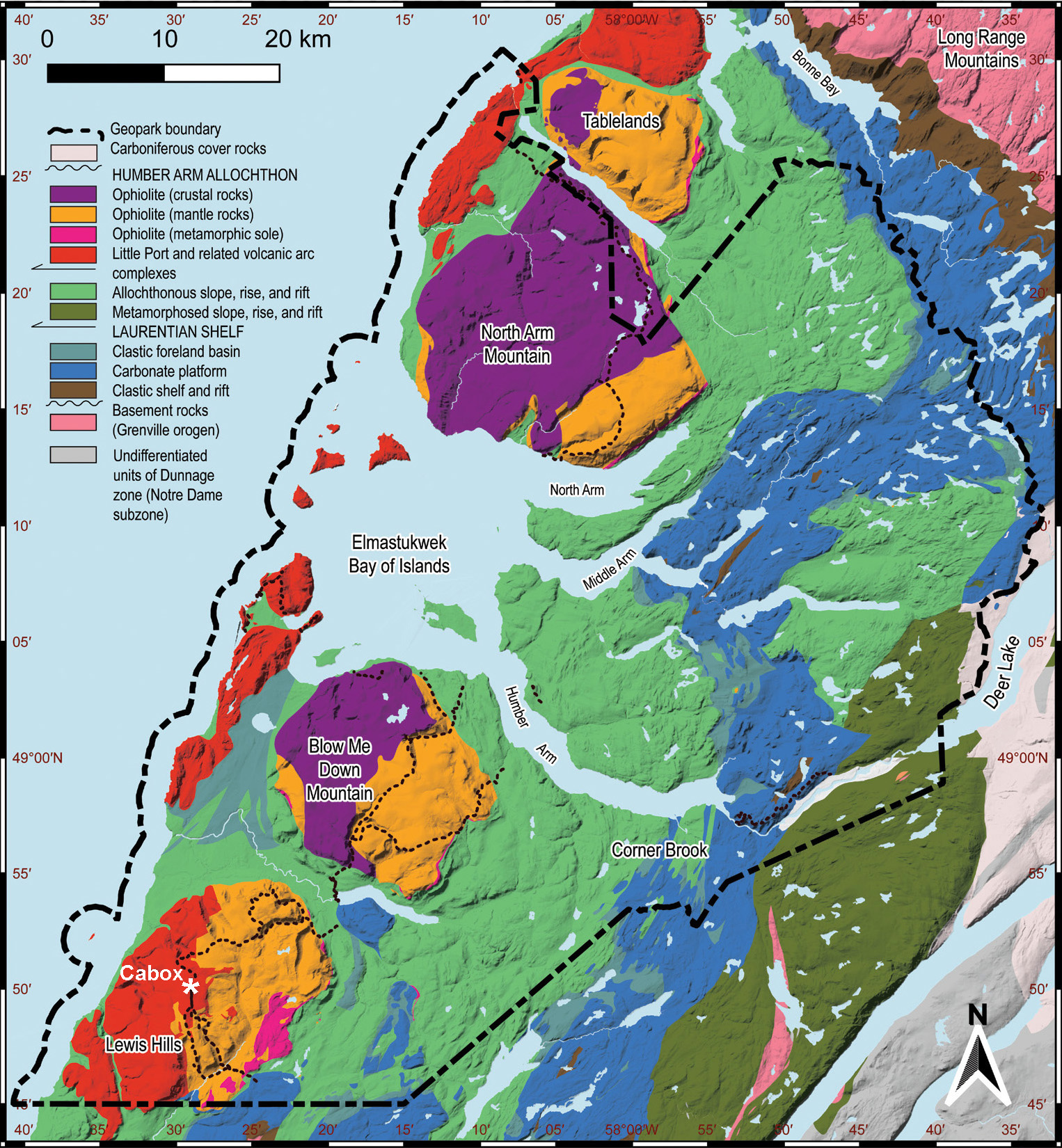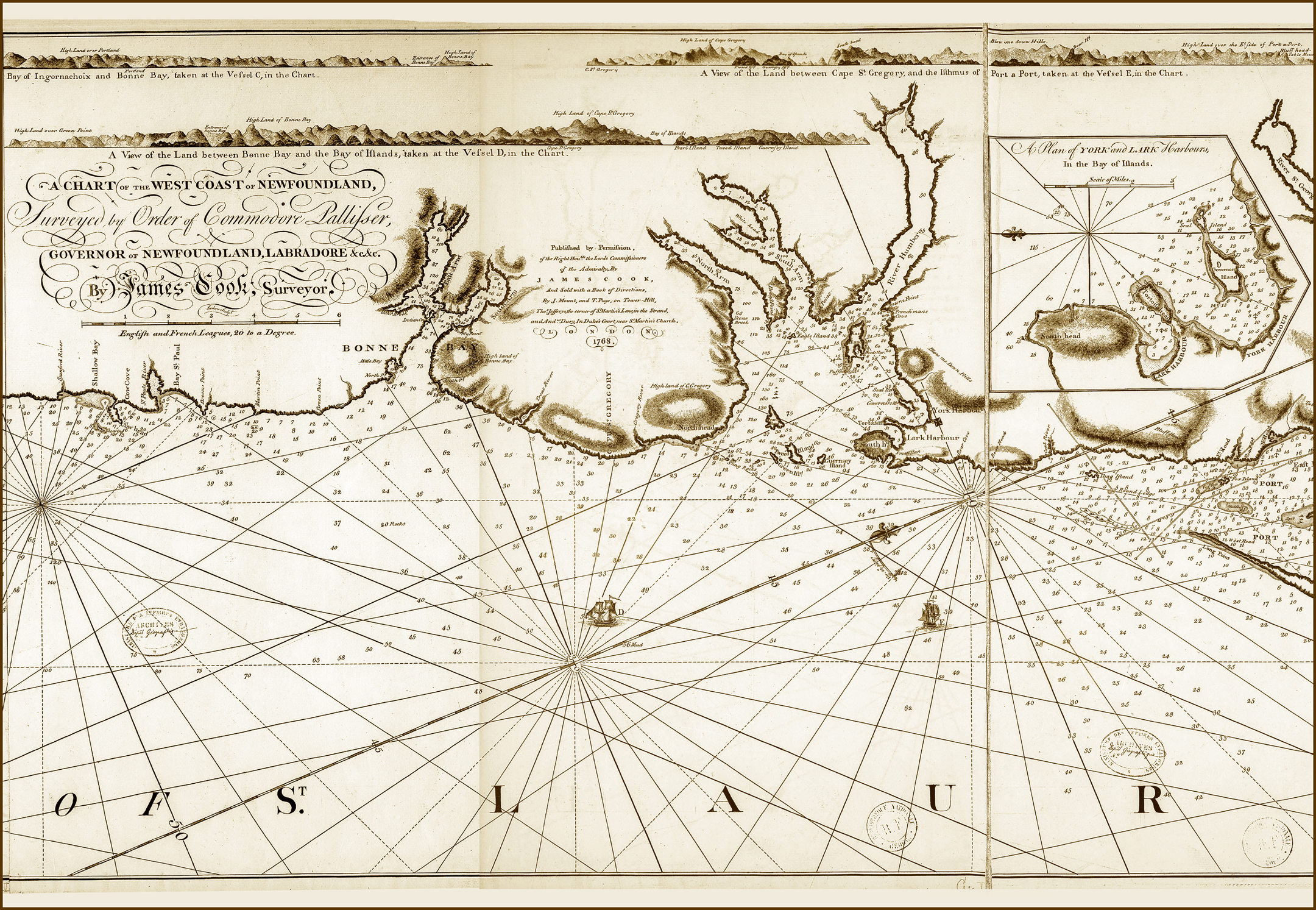Cabox is the name of the highest peak on the island of Newfoundland and the name of an Aspiring Global Geopark spanning the Bay of Islands Ophiolite (representing Paleozoic oceanic lithosphere (i.e., Earth’s crust and upper mantle)), Little Port Complex (representing an ancient island arc in the Iapetus Ocean) and Paleozoic sedimentary rocks of the continental margin of ancient North American.
The name “Cabox” originates from the Spanish, Portuguese, and Galician word “Cabos”, meaning capes, which reflects the area’s dramatic geographical features, including towering peaks and rugged coastal landscapes. The Cabox summit rises to a height of 814 meters (2,670 ft) and holds historical significance as a landmark for early exploration and navigation. It is located in the Lewis Hills, the most southerly of the four Bay of Islands Ophiolite Massifs, thought to have been named after a King Louis of France when the coastline was part of the French Shore of Newfoundland. The other three massifs are Blow-Me-Down Mountains, North Arm Hills (including Gregory Mountains) and Table Mountain (aka Tablelands), the latter located within Gros Morne National Park, a UNESCO World Heritage Site.
During the 18th century, the coastline of the Bay of Islands region was mapped in detail by renowned explorer and cartographer James Cook. In the centuries that followed, Cook’s outline was “colored in” by a series of accomplished geologists including J.B. Jukes, Alexander Murray, James Howley, A.K. Snelgrove, Robert Stevens and Harold “Hank” Williams, who in 1978 published his highly-regarded Tectonic Lithofacies Map of the Appalachian Orogen, on which the deformed margin of Laurentia is named “Humber Zone” after Humber Arm, Bay of Islands. The map was the first to depict orogen-scale tectonic elements in terms of their original settings and locations and its influence has pervaded all subsequent studies of the Appalachians Mountains and contributed to the understanding of other ancient orogens around the world.
William’s colourful tectonic map reflects the unique and varied geological landscapes of spectacular canyons and fiords and the Long Range Mountains of Western Newfoundland – in particular the Humber Arm Allochthon – which may be characterized as the pot of gold at the end of the Appalachian rainbow! But don’t take our word for it. Just ask visitors to Gros Morne National Park, the adjoining UNESCO World Heritage Site that contains the most northern part of the allochthon, including Tablelands ophiolite massif and Green Point, location of the Global Stratotype Section and Point (GSSP) for the boundary between the Cambrian and Ordovician periods of geologic time. It is one of only two GSSPs in Canada, with the other at Fortune Head, also in Newfoundland, which marks the boundary between the Ediacaran and Cambrian periods.
The mission of Cabox Aspiring Geopark is to preserve and promote the geological, ecological, and cultural heritage of the Lower Humber Valley and Bay of Islands region of Western Newfoundland, while developing sustainable recreation and education infrastructure for the benefit of both residents and visitors.



